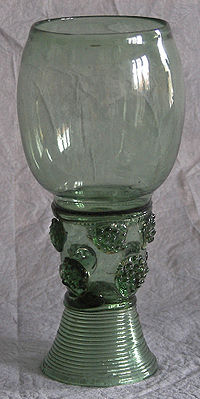
Photo from wikipedia
Abstract The mechanical properties change law of glass fiber reinforced cement (GRC) with fly ash or slag after natural curing for 28, 180, 360 days and accelerated aging at 80 °C for… Click to show full abstract
Abstract The mechanical properties change law of glass fiber reinforced cement (GRC) with fly ash or slag after natural curing for 28, 180, 360 days and accelerated aging at 80 °C for 8 days were studied respectively. Besides the degradation mechanism were discussed. It was found that GRC naturally cured for 28 days exhibited good flexural toughness regardless of mineral admixtures. After natural curing for 180 days, there was no chemical corrosion of glass fiber in GRC, and modulus of rupture (MOR) of GRC increased at the same time, but the loss of fracture energy was more than 50%, and GRC became brittle under the flexural condition. At the age of 360 days, slight chemical corrosion occurred in glass fibers in GRC; and after 8 days of accelerated aging, severe chemical corrosion was observed. However, in these two cases the fracture energy of GRC was similar to that of GRC with the same mix proportion of natural curing to 180 days. The time-dependent deviation of fracture energy can reflect the degradation of GRC performance more precisely than that of MOR. Fly ash and slag may possess the ability of inhibiting the chemical corrosion of glass fibers in GRC according to test results, but the chemical corrosion of glass fibers is not the main reason for the decrease of GRC fracture energy. The key deterioration factor of GRC performance is the strong bonding of glass fibers with hydrates of cementitious materials which lead to fiber breakage rather than fiber pull-out.
Journal Title: Construction and Building Materials
Year Published: 2019
Link to full text (if available)
Share on Social Media: Sign Up to like & get
recommendations!